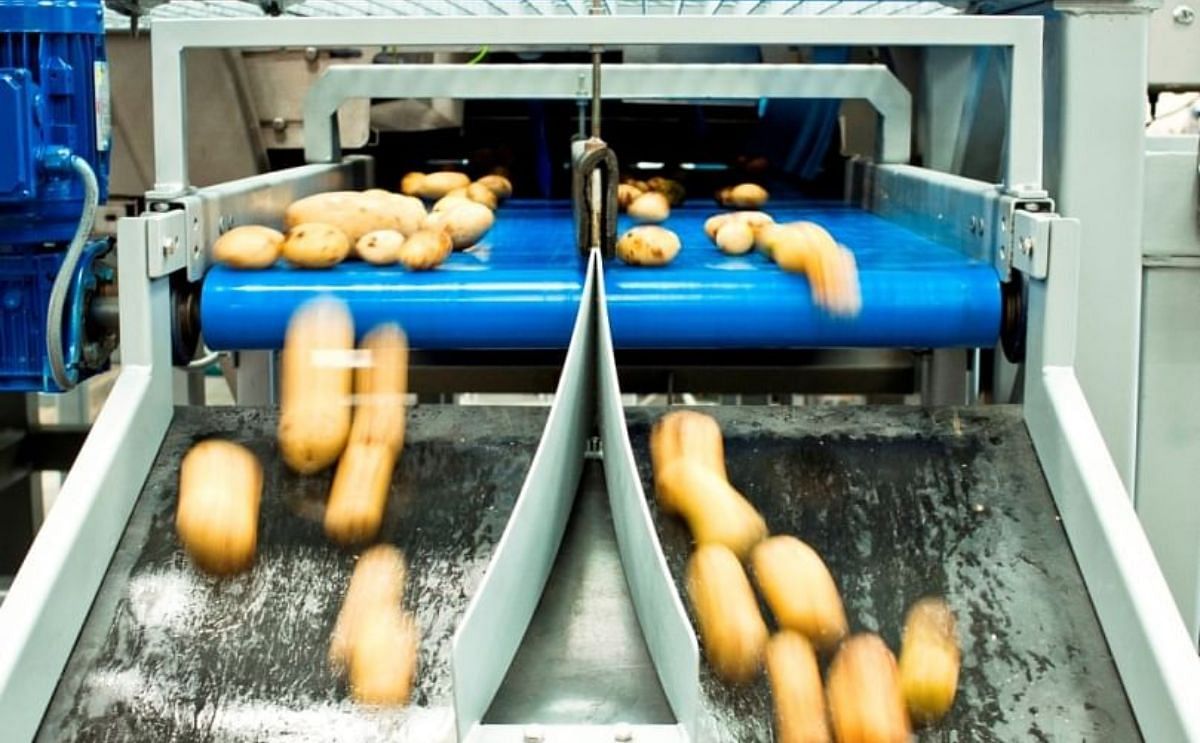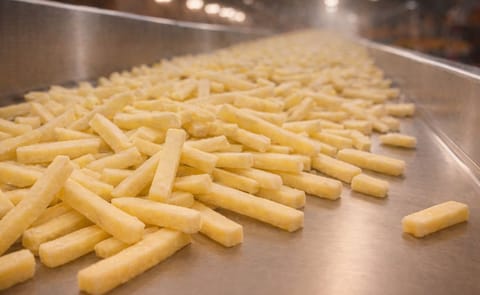The Halo is a high performance machine, able to sort both skin-on and peeled potatoes according to size and quality.
TOMRA puts the HALO under the spotlight at British Potato 2015

Experts from TOMRA Sorting Food will be advising potato processors about the benefits of an effective product sort at British Potato 2015.
The TOMRA team will be highlighting the Halo optical sorter at the show, which is being held at the Harrogate International Exhibition Centre, November 12-13. They will be at booth 15 in hall M.
The Halo is a high performance machine, able to sort both skin-on and peeled potatoes according to size and quality.
Jim Frost, market unit manager whole products from TOMRA Sorting Food, says: “The Halo optical sorter delivers a range of benefits to customers. Its ability to consistently detect and remove those potatoes with unwanted greening defects, blemishes and damage means higher yields and a safer, higher quality final product going to the packing line or onto further processing. Moreover it has the ability to detect, classify and remove subtle defects into a separate stream for second grade pack or further rework in the processing line.
“The Halo offers excellent throughput and capacity, without losing consistency and accuracy, boosting processors’ lines and overall efficiency. It’s an ideal solution for potato processors and packers who need to make their operations leaner and are looking for a good return on their investment using advanced sorting technology.”
TOMRA Sorting Food is a leading provider of sensor-based food sorting machines and processing technology for the fresh and processed food industries. Its cutting edge innovations help processors meet exacting food safety regulations and make for a smart business investment, ensuring an efficient production line operation, optimising throughput and yield, whilst minimising downtime and labour costs.
Using a variety of sensors, which go far beyond the common use of colour cameras, the sorters can detect the smallest defect or foreign material. Near Infra-Red (NIR) spectroscopy enables an analysis of the molecular structure of a product whilst x-rays, fluorescent lighting and lasers measure the elemental composition of objects. The internal composition and surface structure of objects can also be analysed to determine good or bad produce.
For more information, visit www.tomra.com/food









